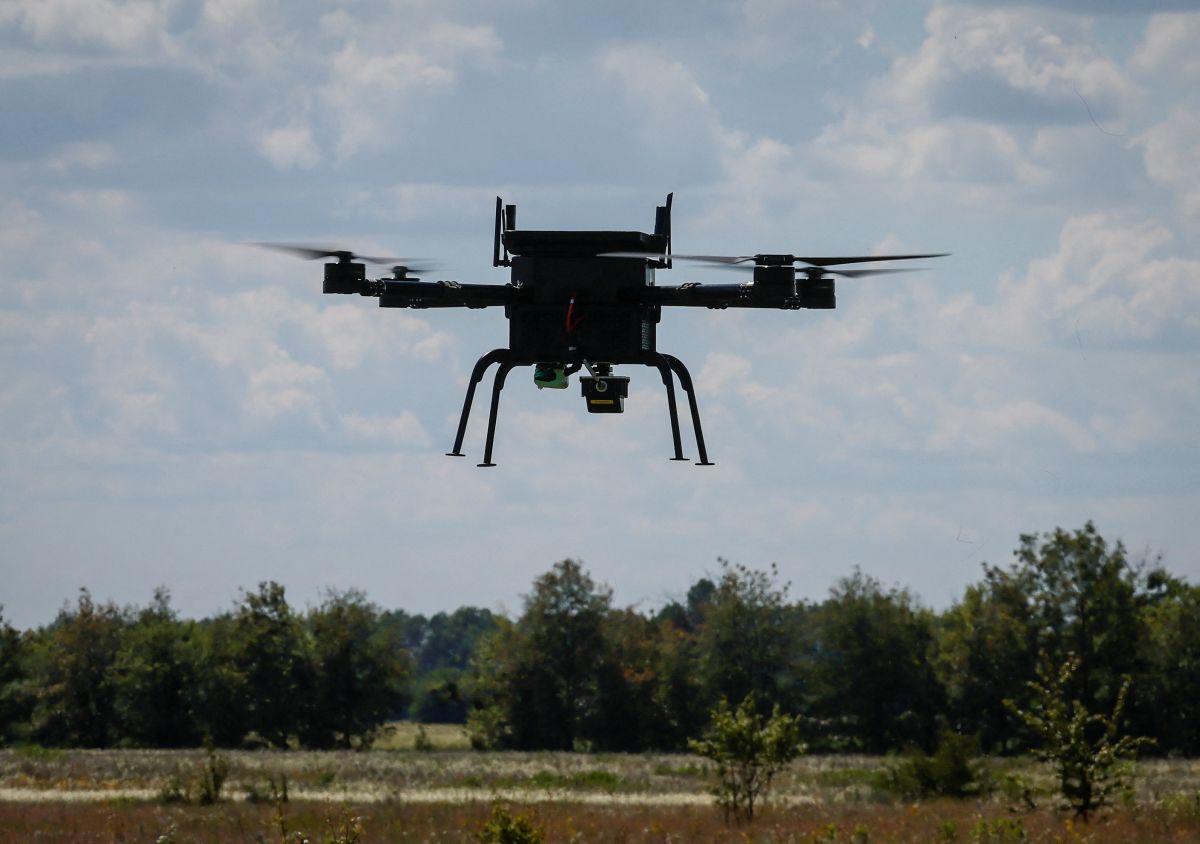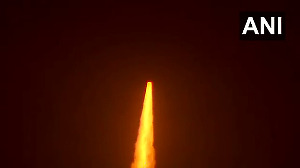The nature of war and its purpose remains unchanged.
The change is in the character of war in terms of a man-machine mix, domination of sensors and certain automation of the tactics and methods of war, points out Colonel Anil A Athale (retd).

Lieutenant General Anil Chait's article on Armed Forces Transformation in Rediff.com on September 5, 2024 is a very welcome effort at a wider public debate on the crucial issue facing the nation.
It is appropriate that this debate is carried out on a general news platform like Rediff.com and not in a purely military media.
National security involves not just the military but wider public involvement, necessary in a democracy.
The backdrop to this debate is the Agnipath reform that was ushered in a couple of years ago.
The Agnipath reform had the twin objective of reducing the pension bill and keeping the armed forces young.
The savings made through this are expected to be plowed back in modernising equipment.
By itself these are unexceptional goals and the need of the hour.
However, the whole gamut of changes in warfare are far more complex.
Agnipath is narrow vision reform that essentially wishes to shift the resources from manpower to equipment. It is far too simplistic a solution to the complex challenge.
It is intended in this article to understand the changes that have taken place already and changes that are likely to occur in the future.
I wish to make a caveat though, my own expertise is limited to the land aspect of warfare and therefore this article will predominantly concern itself with the army and land warfare.
I recently came across a remarkable You Tube interview of General Mark Milley, the former chairman of the US joint chiefs of staff, by Mike Allen co-founder of Axios.
The cerebral American general besides his military experience has impressive academic credentials, a 'Thinking General', a phrase made popular during times of General K Sunderji in India.
General Milley draws attention to revolutionary changes taking place in the military with a new ability to see and strike at long range with precision.
The proliferation of sensors, developing robotics including drones, sailor less ships, unmanned tanks and finally an AI controlled battlefield with autonomous robots performing tasks of both soldiers and generals.
I wish to add that not only have these systems become available (or will soon be) but they are also affordable.
General Milley thinks that in the coming decade the requirement of manpower on the land battlefield will see a 30% reduction.
What is most significant about these predictions is that General Milley makes a clear distinction between 'the nature of war' and 'character of war'.
By nature of war he means the basic definition of war as organised violence by a State to achieve a political aim of subduing the will of the adversary.
This nature of war and its purpose remains unchanged.
The change is in the character of war in terms of a man-machine mix, domination of sensors and certain automation of the tactics and methods of war.
General Milley gives the classic example of World War II when the Germans combined the mobility of tanks and close air support to create a form of warfare called 'blitzkrieg'.
The point to remember while carrying out any military reform in the face of the changing character of the war due to technological advances is that the nature of war remains unchanged.
No military reform -- be it induction of women in the armed forces or changing the manpower mix from long term to short term soldiering -- should ignore the fact that war is a violent activity carried out by a State to impose its will on the opponent.
As we see two contemporary conflicts, one between Israel and Hamas in Gaza and the other between Ukraine and Russia in Europe, it becomes clear that even the change in the 'character of war' is not uniform.
The fighting in Gaza is almost old style with tanks, infantry clearing block by block and large civilian casualties.
Israel had all the latest sensors on the border and a very high tech military. Yet Hamas overwhelmed this force with the ingenious use of simple bulldozers.
Israel has been forced to fight a hand to hand conflict in the congested Gaza areas.
It is back to WWII style attacks, collateral damage and civilian deaths.
At the same time the Russia-Ukraine conflict shows all the characteristics of 21st century warfare with drones, missiles, long range artillery.
One can see live pictures of soldiers with laptops controlling loitering ammunition from the safety of bunkers.
Many of the soldiers on the Ukraine side are in their late 60s. Manpower shortages on both sides has forced such veteran soldiers back into battle. The fact remains that these old soldiers are effective.
So much for the notion of a young army. The Russia-Ukraine war has shown that a battlefield need great skills to operate machines.
Soldiers have become controllers of machines. The balance between men and machines has decisively shifted in favour of machines.
While all this is a novelty for army and land forces, changes like fire and forget missiles, radar guided fire fights at beyond visual range has been the norm in aerial warfare for quite some time.
With drones becoming common place, close air support has now become an integral part of the land forces, obviating the need for the air force for this role.
These indeed are revolutionary changes in land warfare and a full picture is yet to evolve.
But one thing is certain: A modern soldier equipped with these sensors and machines can dominate a much larger area.
Thus, the old ratio of troops to length of the border have become meaningless.
A time will come when a brigade (editor's note: About 3,000 troops plus support staff) will be able to defend an area that earlier needed a division ( editor's note: About 22,000 troops and support staff).

Before we get carried away by the vision of a 'Brave New World' (mentioned in Aldous Huxley's 1932 novel) it is time to pause and reflect.
Will we see a future where armies of robots replace soldiers?
What about insurgencies and guerilla wars?
Why did the US army with all its gadgets, sensors and fire power fail to win against the Taliban in Afghanistan?
In a counterfactual scenario, if the Vietnam war was to be fought with 21st century weapons would the outcome be different? There are no easy or clear answers.
Chances are that all these spectrums of war, control and domination of cyber space, a high tech robotic army to good old counterinsurgency based on infantry will exist simultaneously.
In addition to this, a country like India has a task of manning thousands of kilometres of border at peace time, both the Line of Control with Pakistan and the Line of Actual Control with China are un-demarcated borders.
Such a situation is not faced by any major power, least of all the US that faces no land border threats.
Even from this very cursory discussion, it is clear that for various spectrums of war very different kind of soldiers would be needed.
For machine predominant battlefields, long term engaged and skilled man/woman power would be needed.
Counterinsurgency or manning hostile mountainous borders would have different requirements.
Could we organise the army on a functional basis like an automated battlefield force, a counter insurgency force, a cyber force rather than the conventional way of geographical organisation of theatre based forces?
These are the questions that need to be asked, widely debated and a deliberate action taken.
Reform by executive orders is a recipe for disaster.
Colonel Anil A Athale (retd) is a military historian whose earlier columns can be read here.
Feature Presentation: Aslam Hunani/Rediff.com






 © 2024 Rediff.com -
© 2024 Rediff.com -